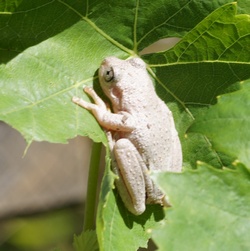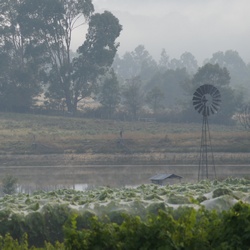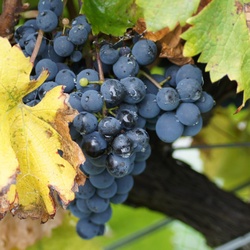Vintage Report 2011
Published on September 31, 2011
Published on September 31, 2011
Every season is different. Every year, every vineyard and every winemaker produces different grapes and a different wine.
And every wine is the portrait of one vintage, of one year in the life of its vineyard, its weather, its management and its mistakes.
A colder than average August and September gave us a very late start to the 2011 growing season. Bud burst, usually on 1st of September or one to three days earlier or later, was –totally unheard of - about 10 days late. But the vine moths emerged at their usual time, and were desperately seeking for leaves to lay their eggs on.

Throughout the growing season the weather was often wet and overcast for many days on end. This is unusual for us and very noticeable, not only in the vineyard but also in the winery and the rest of the farm, because of course both depend on a small solar system.

During spring and early summer we got 20% more rainfall than usual. But this total was the result of frequent very light rains; and while many regions experienced devastating floods, our dams remained worryingly low.

During flowering we had rain and wind, a combination which is well known to cause grey mould. Botrytis will lie dormant in grapes until they start to get ripe and then wakes up and has a good time.
With higher rainfall and humidity there is more and faster growth. This means more frequent sprays become necessary to protect the new leaves. Also sprays are washed off quickly and rain, wind and waterlogged soil make it impossible to go out with the tractor and spray. Often chemicals are no

longer available, because other vineyards have the same problem and buy them up by the ton.
But the answer to increased disease pressure is NOT to spray more and more or at higher concentrations.

Just like over-use of antibiotics this causes resistance in fungal strains and upsets the natural balance between different species. And this will be important in the years to come. With all our scientific knowledge there is sometimes not much we can do.
So we watched and worried, but the vines looked well, with healthy leaf cover and plump bunches of grapes. Thinning, trimming and mowing took more time than usual, but of course is vital during wet years, when a shaded, dense canopy harbours disease.

Then January was very dry and at the end of the month we had two very hot, windy days with 41 °C and a bushfire started about 40 km away, sending clouds of smoke into the sky and down onto the vineyard. A few days later some rain helped to control the blaze, but as soon as we were in clean air again official burning off began and we were in smoke once more.

We had no problem keeping on top of the mildews, but as expected, with the ongoing wet weather in autumn Botrytis woke up as soon as the grapes neared maturity.

On each vine two or three bunches
showed Botrytis. It is always frustrating to see the work and income of a year go to waste and so we had the clever idea to cut them all out and feed them to our cattle to prevent spreading of the disease.
The cattle loved it.
However, when we came to pick the grapes Botrytis had spread and there was no difference between the blocks where we had spent weeks cutting out grapes and the blocks where we had done nothing.


So the selecting of clean grapes had to be done
during the picking, painstaking, time-consuming, messy, boring. Our pickers worried along with us, about the amount of Botrytis to be tolerated or discarded and the quality of the 2011 wines. Not many wineries have THAT privilege.
Overall it was a good year for ducks, frogs, spiders and cattle, perhaps not so good for filling dams, viticulturists, winemakers and pickers.
The end result: An average vintage, but with 25 % crop loss and a lot of work and worry which does not show. The best performing variety was Cabernet Sauvignon, which came in with beautiful , deep flavours.